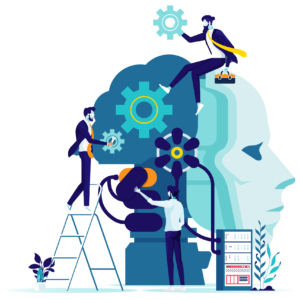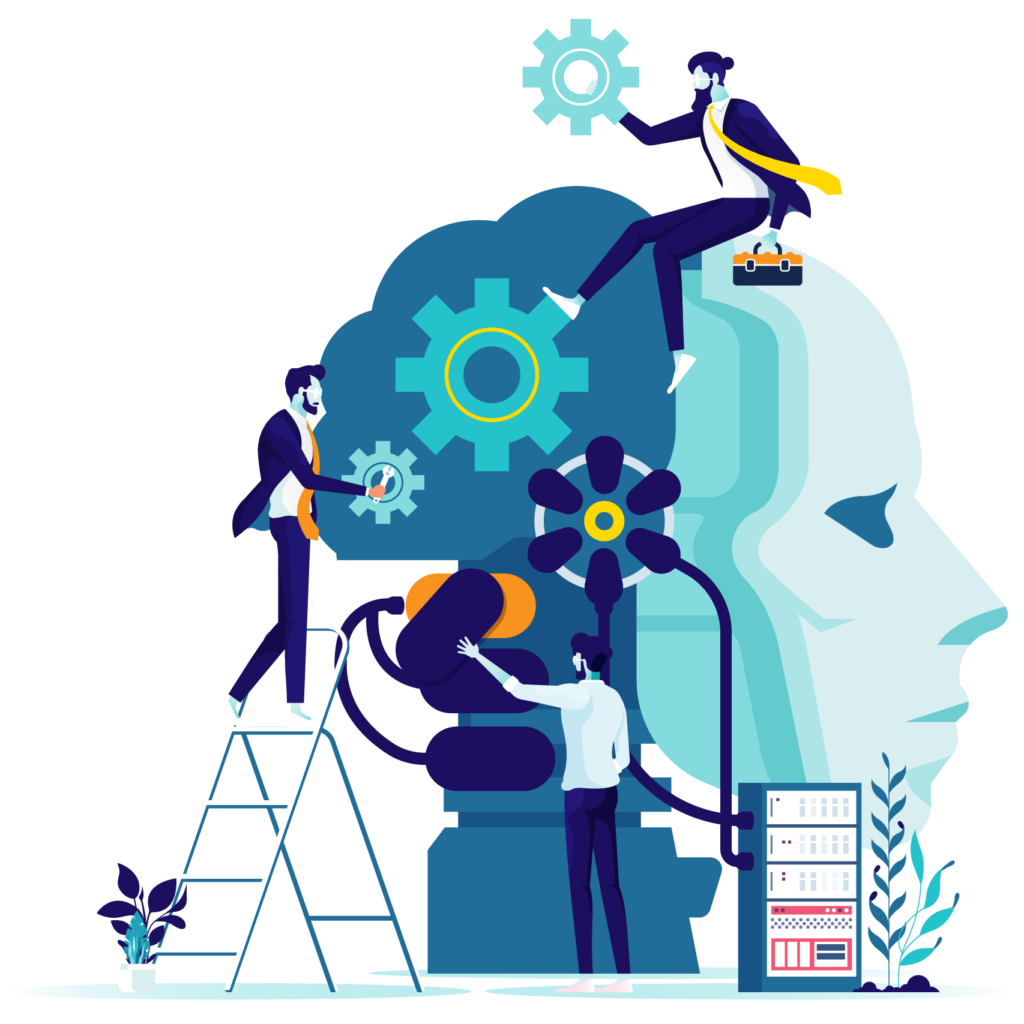Machine learning (ML) and artificial intelligence (AI) are revolutionizing industries by enabling machines to learn from data and perform tasks that typically require human intelligence. However, the journey to successful AI/ML implementation is fraught with challenges, and many practitioners often fall into common pitfalls. This article outlines best practices for ML and AI, emphasizing the importance of the correct mindset, background knowledge, technical skills, reasonable judgments, logical thinking, and detailed testing.

1. Understanding AI and ML
1.1. Definitions and Importance
- Artificial Intelligence (AI): The simulation of human intelligence processes by machines, especially computer systems. These processes include learning (the acquisition of information and rules for using the information), reasoning (using rules to reach approximate or definite conclusions), and self-correction.
- Machine Learning (ML): A subset of AI that involves the use of statistical techniques to enable machines to improve at tasks with experience. It focuses on developing algorithms that can learn from and make predictions or decisions based on data.
1.2. Key Concepts
- Supervised Learning: The algorithm is trained on a labeled dataset, which means that each training example is paired with an output label.
- Unsupervised Learning: The algorithm is given data without explicit instructions on what to do with it. The goal is to identify patterns and structures in the data.
- Reinforcement Learning: The algorithm learns by interacting with an environment and receiving feedback in the form of rewards or punishments.
2. The Correct Mindset
2.1. Be Curious and Skeptical
A successful AI/ML practitioner approaches problems with curiosity and a critical mindset. Questioning assumptions, probing deeper into data anomalies, and being skeptical of initial results are essential for uncovering true insights.
2.2. Focus on the Problem, Not the Solution
Always start with a clear understanding of the problem you are trying to solve. Avoid the temptation to jump straight into model building without comprehending the underlying business or research objectives.
2.3. Ethical Considerations
Ethics in AI/ML involves fairness, transparency, accountability, and respect for privacy. Practitioners should strive to build models that do not perpetuate bias, discriminate unfairly, or violate privacy.
3. Background Knowledge
3.1. Domain Expertise
Having domain knowledge is crucial for understanding the context and nuances of the data. Collaborate with domain experts to gain insights that can inform feature selection and model interpretation.
3.2. Statistical Knowledge
A strong foundation in statistics is vital for understanding data distributions, hypothesis testing, and confidence intervals. This knowledge helps in selecting appropriate models and validating results.
3.3. Programming Skills
Proficiency in programming languages such as Python or R is essential for implementing ML algorithms, performing data manipulation, and automating processes.
4. Data Preparation
4.1. Data Collection
Collecting high-quality data is the first step in any AI/ML project. Ensure that the data is relevant, representative, and sufficient to train robust models. This might involve combining data from multiple sources to get a comprehensive dataset.
4.2. Data Cleaning
Data cleaning involves handling missing values, correcting errors, and removing duplicates. This step is critical as the quality of the data directly impacts model performance. Common techniques include:
- Imputation: Filling in missing values with estimated values.
- Outlier Detection: Identifying and addressing outliers that can skew results.
- Normalization: Adjusting values to a common scale.
4.3. Data Transformation
Transforming data into a suitable format for analysis is crucial. This can include:
- Feature Engineering: Creating new variables that can improve model performance.
- Feature Selection: Identifying the most relevant features for the analysis.
- Dimensionality Reduction: Reducing the number of features to simplify the model and improve performance.
5. Model Building
5.1. Choosing the Right Model
Selecting the appropriate model depends on the nature of the problem and the type of data. Common models include:
- Linear Regression: For predicting continuous outcomes.
- Logistic Regression: For binary classification problems.
- Decision Trees: For both classification and regression tasks.
- Neural Networks: For complex patterns and high-dimensional data.
5.2. Training the Model
Training involves splitting the data into training and validation sets to build and fine-tune the model. Use techniques like cross-validation to ensure the model generalizes well to new data.
5.3. Hyperparameter Tuning
Optimize model performance by tuning hyperparameters. This can be done using grid search, random search, or more sophisticated methods like Bayesian optimization.
5.4. Model Evaluation
Evaluate the model using appropriate metrics to ensure its accuracy and reliability. Common evaluation metrics include:
- Accuracy: The proportion of correct predictions.
- Precision and Recall: Metrics for evaluating classification models.
- F1 Score: The harmonic mean of precision and recall.
- Mean Squared Error (MSE): For regression tasks.
5.5. Avoiding Overfitting
Overfitting occurs when a model learns the training data too well, including its noise and outliers, and performs poorly on new data. Techniques to prevent overfitting include:
- Regularization: Adding a penalty to the model complexity.
- Pruning: Simplifying decision trees by removing branches that have little importance.
- Dropout: Regularization technique for neural networks to prevent overfitting.
6. Detailed Testing
6.1. Test Data
Using a separate test dataset that the model has not seen before is essential for evaluating its true performance. This helps in assessing how well the model generalizes to new data.
6.2. Cross-Validation
Cross-validation involves partitioning the data into subsets, training the model on some subsets, and validating it on the remaining subsets. This provides a robust measure of model performance.
6.3. Sensitivity Analysis
Conducting sensitivity analysis involves varying the model parameters and observing the changes in its performance. This helps in understanding the robustness of the model and identifying the most influential factors.
6.4. Error Analysis
Analyzing the errors made by the model can provide insights into areas where the model is performing poorly. This can guide further refinement and improvement of the model.
7. Deployment and Maintenance
7.1. Model Deployment
Deploying the model involves integrating it into the business processes where it will be used to make decisions. This requires collaboration with IT and other departments to ensure seamless integration.
7.2. Monitoring and Updating
Once deployed, the model’s performance should be continuously monitored. Regular updates and retraining may be necessary to ensure the model remains accurate as new data becomes available.
7.3. User Training
Training end-users on how to interpret and use the model’s results is crucial. Providing clear documentation and support helps in maximizing the value derived from the model.
8. Ethical AI and Fairness
8.1. Bias and Fairness
Ensure that the model does not perpetuate or exacerbate biases. This involves:
- Bias Detection: Using techniques to identify bias in the data and model.
- Fairness Constraints: Incorporating fairness metrics and constraints during model training.
- Diverse Datasets: Ensuring that the training data is representative of the population.
8.2. Transparency and Explainability
Build models that are interpretable and provide explanations for their predictions. This is crucial for gaining trust and ensuring accountability. Techniques include:
- Model Interpretability: Using simpler models or techniques like LIME or SHAP for explaining complex models.
- Documentation: Clearly documenting the model’s development process, assumptions, and limitations.
8.3. Privacy and Security
Protect user data and ensure compliance with data protection regulations such as GDPR or CCPA. This involves:
- Data Anonymization: Removing personally identifiable information from the data.
- Secure Storage: Using encryption and other security measures to protect data.
- Access Controls: Limiting access to sensitive data to authorized personnel only.
9. Continuous Improvement
9.1. Feedback Loops
Establishing feedback loops allows for continuous learning and improvement. Gathering feedback from users and stakeholders helps in refining the model and making necessary adjustments.
9.2. Staying Updated
The field of AI and ML is constantly evolving. Staying updated with the latest techniques, tools, and best practices is essential for maintaining the effectiveness of AI/ML efforts.
9.3. Research and Development
Encourage ongoing research and experimentation to explore new methods and improve existing models. This can involve:
- Collaborations: Partnering with academic institutions or other organizations.
- Experimentation: Allocating resources for pilot projects and experimentation.
Conclusion
Machine learning and artificial intelligence are powerful tools that can transform industries and solve complex problems. However, to achieve meaningful and ethical results, it is crucial to follow best practices. This involves having the right mindset, possessing the necessary background knowledge, preparing data meticulously, building robust models, conducting detailed testing, and ensuring proper deployment and maintenance. By adhering to these best practices, AI/ML practitioners can avoid common pitfalls and unlock the full potential of these technologies, making a positive impact while maintaining ethical standards.
—
This detailed guide should serve as a comprehensive resource for anyone looking to improve their AI.


